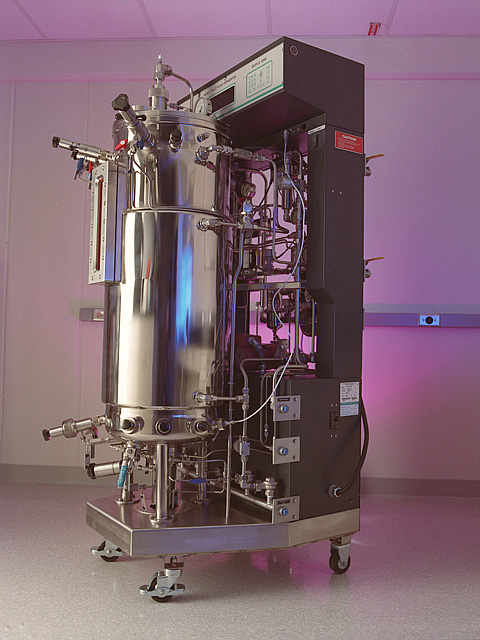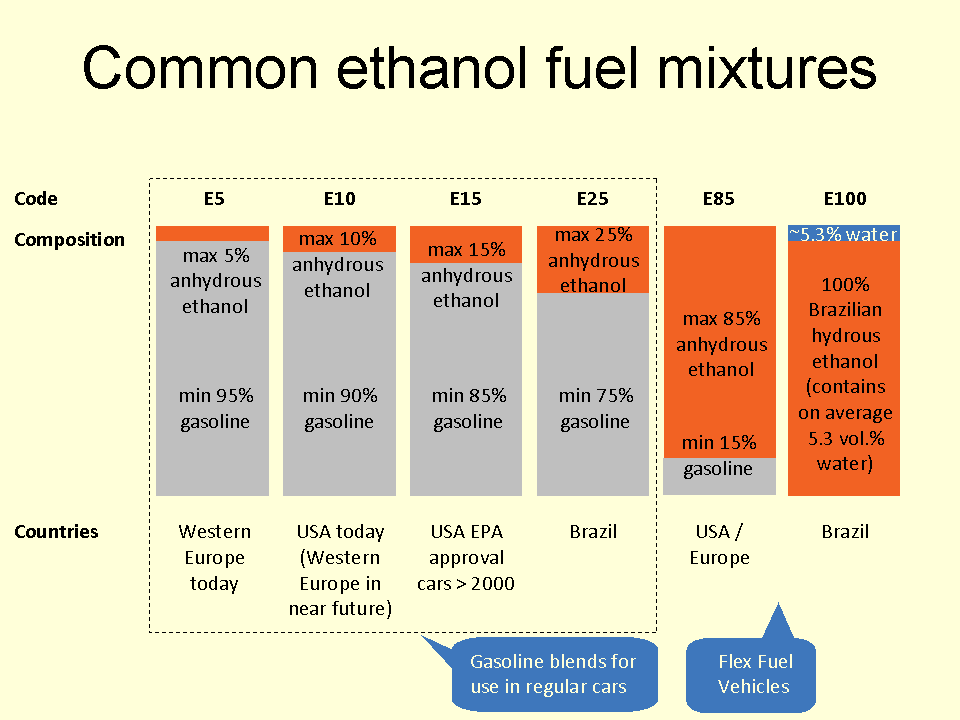|
Saccharophagus
''Saccharophagus degradans'' is a gram-negative marine bacterium known to degrade a number of complex polysaccharides as energy source. ''S. degradans'' have also been shown to ferment xylose to ethanol. In recent studies, ''Saccharophagus degradans'' from Chesapeake Bay was effectively used to produce cellulosic ethanol. Cellulosic ethanol production by means of bacterial action could be the key cheap production of cellulosic ethanol for global mass market production of bioethanol. It is currently produced by such means as gasification Gasification is a process that converts biomass- or fossil fuel-based carbonaceous materials into gases, including as the largest fractions: nitrogen (N2), carbon monoxide (CO), hydrogen (H2), and carbon dioxide (). This is achieved by reacting .... ''Saccharophagus degradans'' is the only species in the genus ''Saccharophagus''. References External linksType strain of ''Saccharophagus degradans'' at Bac''Dive'' - the Bacterial Diversity Me ... [...More Info...] [...Related Items...] OR: [Wikipedia] [Google] [Baidu] |
Gammaproteobacteria
''Gammaproteobacteria'' is a class of bacteria in the phylum ''Pseudomonadota'' (synonym ''Proteobacteria''). It contains about 250 genera, which makes it the most genus-rich taxon of the Prokaryotes. Several medically, ecologically, and scientifically important groups of bacteria belong to this class. All members of this class are Gram-negative. It is the most phylogenetically and physiologically diverse class of the ''Pseudomonadota''. Members of ''Gammaproteobacteria'' live in several terrestrial and marine environments, in which they play various important roles, including in extreme environments such as hydrothermal vents. They can have different shapes, rods, curved rods, cocci, spirilla, and filaments, and include free living bacteria, biofilm formers, commensals and symbionts; some also have the distinctive trait of being bioluminescent. Diverse metabolisms are found in ''Gammaproteobacteria''; there are both aerobic and anaerobic (obligate or facultative) species, chem ... [...More Info...] [...Related Items...] OR: [Wikipedia] [Google] [Baidu] |
Xylose
Xylose ( , , "wood") is a sugar first isolated from wood, and named for it. Xylose is classified as a monosaccharide of the aldopentose type, which means that it contains five carbon atoms and includes an aldehyde functional group. It is derived from hemicellulose, one of the main constituents of biomass. Like most sugars, it can adopt several structures depending on conditions. With its free aldehyde group, it is a reducing sugar. Structure The acyclic form of xylose has chemical formula . The cyclic hemiacetal isomers are more prevalent in solution and are of two types: the pyranoses, which feature six-membered rings, and the furanoses, which feature five-membered rings (with a pendant group). Each of these rings is subject to further isomerism, depending on the relative orientation of the anomeric hydroxy group. The dextrorotary form, -xylose, is the one that usually occurs endogenously in living things. A levorotary form, -xylose, can be synthesized. Occurren ... [...More Info...] [...Related Items...] OR: [Wikipedia] [Google] [Baidu] |
LPSN
List of Prokaryotic names with Standing in Nomenclature (LPSN) is an online database that maintains information on the naming and taxonomy image:Hierarchical clustering diagram.png, 280px, Generalized scheme of taxonomy Taxonomy is a practice and science concerned with classification or categorization. Typically, there are two parts to it: the development of an underlying scheme o ... of prokaryotes, following the taxonomy requirements and rulings of the International Code of Nomenclature of Prokaryotes. The database was curated from 1997 to June 2013 by Jean P. Euzéby. From July 2013 to January 2020, LPSN was curated by Aidan C. Parte. In February 2020, a new version of LPSN was published as a service of the Leibniz Institute DSMZ, thereby also integrating the Prokaryotic Nomenclature Up-to-date service and since 2022 LPSN is interconnected with the Type (Strain) Genome Server (TYGS), DSMZ's high-throughput platform for accurate genome-based taxonomy. See also * Code o ... [...More Info...] [...Related Items...] OR: [Wikipedia] [Google] [Baidu] |
Marine Bacterium
Marine prokaryotes are marine bacteria and marine archaea. They are defined by their habitat as prokaryotes that live in Marine habitat, marine environments, that is, in the saline water, saltwater of seas or oceans or the brackish water of coastal Estuary, estuaries. All cellular life forms can be divided into prokaryotes and eukaryotes. Eukaryotes are organisms whose cells have a cell nucleus, nucleus enclosed within biological membrane, membranes, whereas prokaryotes are the organisms that do not have a nucleus enclosed within a membrane. The three-domain system of Taxonomy (biology), classifying life adds another division: the prokaryotes are divided into two domains of life, the microscopic bacteria and the microscopic archaea, while everything else, the eukaryotes, become the third domain. Prokaryotes play important roles in ecosystems as decomposers recycling nutrients. Some prokaryotes are pathogenic, causing disease and even death in plants and animals. Marine prokar ... [...More Info...] [...Related Items...] OR: [Wikipedia] [Google] [Baidu] |
Ethanol
Ethanol (also called ethyl alcohol, grain alcohol, drinking alcohol, or simply alcohol) is an organic compound with the chemical formula . It is an Alcohol (chemistry), alcohol, with its formula also written as , or EtOH, where Et is the pseudoelement symbol for ethyl group, ethyl. Ethanol is a Volatility (chemistry), volatile, flammable, colorless liquid with a characteristic wine-like odor and pungent taste. As a psychoactive depressant, it is the active ingredient in alcoholic beverages, and the second most consumed drug globally behind caffeine. Ethanol is naturally produced by the fermentation process of sugars by yeasts or via petrochemical processes such as ethylene hydration. Historically it was used as a general anesthetic, and has modern medical applications as an antiseptic, disinfectant, solvent for some medications, and antidote for methanol poisoning and ethylene glycol poisoning. It is used as a chemical solvent and in the Chemical synthesis, synthesis of orga ... [...More Info...] [...Related Items...] OR: [Wikipedia] [Google] [Baidu] |
Chesapeake Bay
The Chesapeake Bay ( ) is the largest estuary in the United States. The bay is located in the Mid-Atlantic (United States), Mid-Atlantic region and is primarily separated from the Atlantic Ocean by the Delmarva Peninsula, including parts of the Eastern Shore of Maryland, the Eastern Shore of Virginia, and the state of Delaware. The mouth of the bay at its southern point is located between Cape Henry and Cape Charles (headland), Cape Charles. With its northern portion in Maryland and the southern part in Virginia, the Chesapeake Bay is a very important feature for the ecology and economy of those two states, as well as others surrounding within its watershed. More than 150 major rivers and streams flow into the bay's drainage basin, which covers parts of six states (New York (state), New York, Pennsylvania, Delaware, Maryland, Virginia, and West Virginia) and all of Washington, D.C. The bay is approximately long from its northern headwaters in the Susquehanna River to its outlet i ... [...More Info...] [...Related Items...] OR: [Wikipedia] [Google] [Baidu] |
Cellulosic Ethanol
Cellulosic ethanol is ethanol (ethyl alcohol) produced from cellulose (the stringy fiber of a plant) rather than from the plant's seeds or fruit. It can be produced from grasses, wood, algae, or other plants. It is generally discussed for use as a biofuel. The carbon dioxide that plants Photosynthesis, absorb as they grow offsets some of the carbon dioxide emitted when ethanol made from them is Combustion, burned, so cellulosic ethanol fuel has the potential to have a lower carbon footprint than fossil fuels. Interest in cellulosic ethanol is driven by its potential to replace Corn ethanol, ethanol made from corn or sugarcane. Since these plants are also used for food products, diverting them for ethanol production can cause food prices to rise; cellulose-based sources, on the other hand, generally do not compete with food, since the fibrous parts of plants are mostly inedible to humans. Another potential advantage is the high diversity and abundance of cellulose sources; grasses, t ... [...More Info...] [...Related Items...] OR: [Wikipedia] [Google] [Baidu] |
Bioethanol
Ethanol fuel is fuel containing ethyl alcohol, the same type of alcohol as found in alcoholic beverages. It is most often used as a motor fuel, mainly as a biofuel additive for gasoline. Several common ethanol fuel mixtures are in use around the world. The use of pure hydrous or anhydrous ethanol in internal combustion engines (ICEs) is possible only if the engines are designed or modified for that purpose. Anhydrous ethanol can be blended with :gasoline (petrol) for use in gasoline engines, but with a high ethanol content only after engine modifications to meter increased fuel volume since pure ethanol contains only 2/3 the energy of an equivalent volume of pure gasoline. High percentage ethanol mixtures are used in some racing engine applications since the very high octane rating of ethanol is compatible with very high compression ratios. The first production car running entirely on ethanol was the Fiat 147, introduced in 1978 in Brazil by Fiat. Ethanol is commonly m ... [...More Info...] [...Related Items...] OR: [Wikipedia] [Google] [Baidu] |
Gasification
Gasification is a process that converts biomass- or fossil fuel-based carbonaceous materials into gases, including as the largest fractions: nitrogen (N2), carbon monoxide (CO), hydrogen (H2), and carbon dioxide (). This is achieved by reacting the feedstock material at high temperatures (typically >700 °C), without combustion, via controlling the amount of oxygen and/or steam present in the reaction. The resulting gas mixture is called syngas (from synthesis gas) or producer gas and is itself a fuel due to the flammability of the H2 and CO of which the gas is largely composed. Power can be derived from the subsequent combustion of the resultant gas, and is considered to be a source of renewable energy if the gasified compounds were obtained from biomass feedstock. An advantage of gasification is that syngas can be more efficient than direct combustion of the original feedstock material because it can be combusted at higher temperatures so that the thermodynamic upper limi ... [...More Info...] [...Related Items...] OR: [Wikipedia] [Google] [Baidu] |
Monotypic Bacteria Genera
In biology, a monotypic taxon is a taxonomic group (taxon) that contains only one immediately subordinate taxon. A monotypic species is one that does not include subspecies or smaller, infraspecific taxa. In the case of genera, the term "unispecific" or "monospecific" is sometimes preferred. In botanical nomenclature, a monotypic genus is a genus in the special case where a genus and a single species are simultaneously described. Theoretical implications Monotypic taxa present several important theoretical challenges in biological classification. One key issue is known as "Gregg's Paradox": if a single species is the only member of multiple hierarchical levels (for example, being the only species in its genus, which is the only genus in its family), then each level needs a distinct definition to maintain logical structure. Otherwise, the different taxonomic ranks become effectively identical, which creates problems for organizing biological diversity in a hierarchical system. ... [...More Info...] [...Related Items...] OR: [Wikipedia] [Google] [Baidu] |




